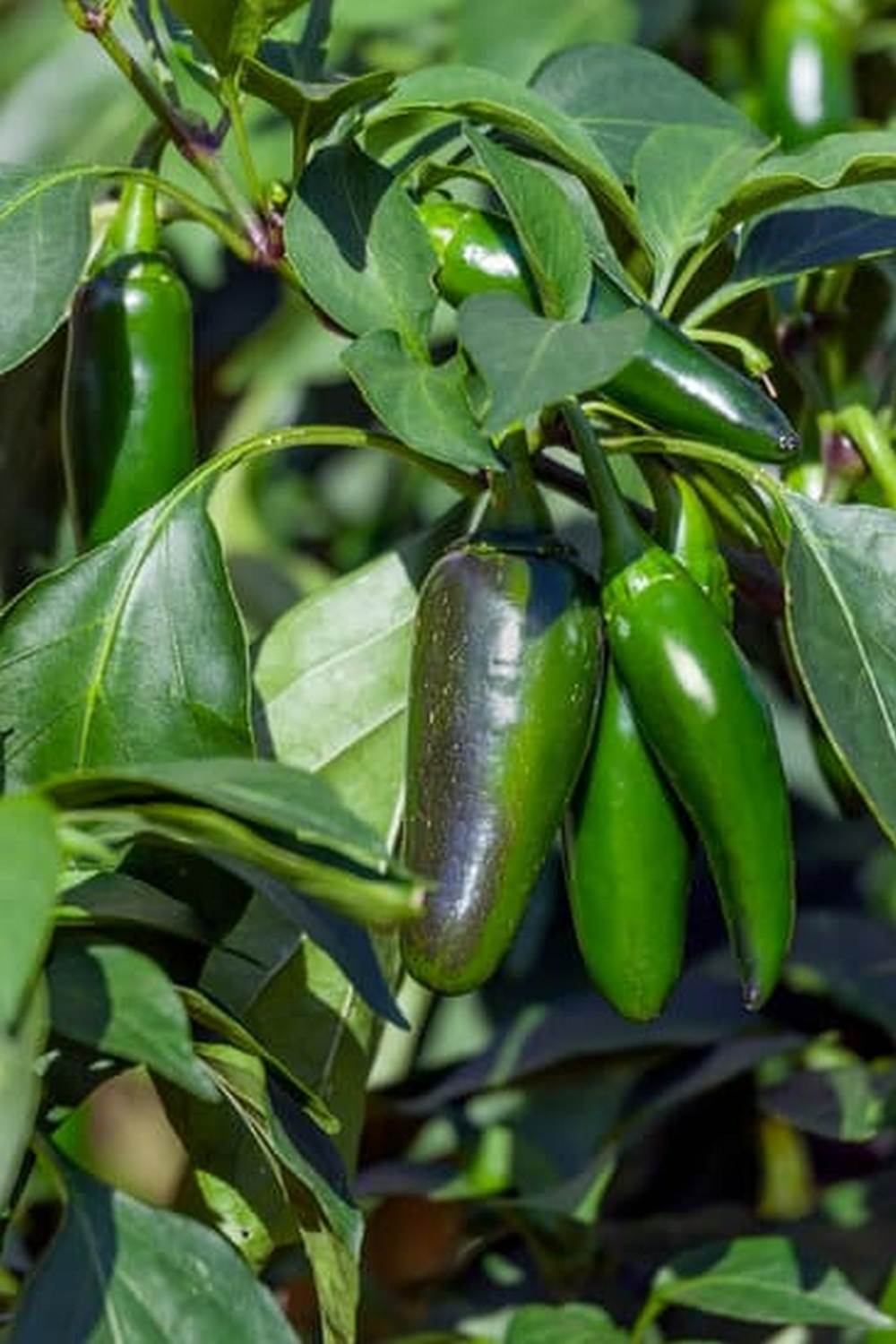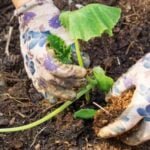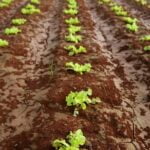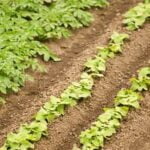If you’re a gardening enthusiast in Zone 3, you know the challenges and rewards that come with cultivating vegetables in this climate. Zone 3 gardening vegetables require special consideration and care to thrive. From understanding the unique climate to choosing the right crops, here’s what you need to know to make the most of your Zone 3 vegetable garden.
Gardening in Zone 3 can be both daunting and fulfilling. With relatively short growing seasons and cold temperatures, gardeners face distinct challenges when it comes to cultivating vegetables. However, the satisfaction of harvesting your own produce and the resilience of plants adapted to the climate make it all worthwhile. By understanding the specific needs of plants in Zone 3, you can create a successful and abundant vegetable garden despite the limitations of your climate.
In this article, we’ll explore everything you need to know about Zone 3 gardening – from selecting the best vegetables for this climate to preparing your soil and garden for optimal growth. Whether you’re new to gardening or a seasoned veteran looking for tips on how to thrive in Zone 3, this comprehensive guide will provide valuable insights into maximizing your vegetable yield in challenging conditions.
So let’s dive in and discover how you can create a flourishing vegetable garden in Zone 3.
Best Vegetables for Zone 3 Gardening
Zone 3 gardening vegetables are those that are able to withstand the harsh and cold temperatures that come with this specific climate zone. Some of the best vegetables for Zone 3 gardening include root vegetables such as carrots, beets, and potatoes, as well as cold-hardy greens like spinach, kale, and Swiss chard.
Other suitable options for Zone 3 gardening include cabbage, broccoli, and Brussels sprouts. When choosing vegetables for Zone 3 gardening, it is important to select varieties that have shorter maturity dates to ensure a successful harvest before the first frost.
One of the key attributes to look for in vegetables for Zone 3 gardening is their ability to withstand low temperatures. For example, carrots are an excellent choice because they actually become sweeter when exposed to cold temperatures. Similarly, kale and Swiss chard can tolerate freezing temperatures and even taste better after a frost.
It’s also important to consider the potential growth height of the plants when choosing vegetables for Zone 3 gardening. This is especially crucial when dealing with limited sunlight in this region.
In addition to the aforementioned vegetables, some other suitable options for Zone 3 gardening include peas, radishes, and certain types of lettuces. These cool-season crops have been proven to thrive in conditions typical of Zone 3 climates. While it may present some challenges due to its extreme weather patterns, successful vegetable gardening is still possible in Zone 3 with careful planning and appropriate plant selection.
| Vegetable | Attributes | Tips |
|---|---|---|
| Carrots | Sweetens in cold temperatures | Choose varieties with shorter maturity dates |
| Kale & Swiss Chard | Tolerate freezing temperatures; taste better after a frost | Select varieties that have shorter growth heights |
Preparing Your Garden for Zone 3 Vegetables
When it comes to zone 3 gardening vegetables, proper preparation is key to ensuring a successful harvest. The harsh climate of Zone 3 presents unique challenges, but with the right approach, you can create a thriving vegetable garden. Here are some essential steps to prepare your garden for growing vegetables in Zone 3:
1. Soil Preparation:
Before planting any vegetables, it’s crucial to assess and improve the quality of your soil. Conduct a soil test to determine its pH level and nutrient content. In Zone 3, the soil may be acidic and deficient in nutrients, so adding organic matter such as compost or aged manure can enhance the soil’s fertility. Additionally, ensure good drainage to prevent waterlogging, which can be detrimental to many vegetable plants.
2. Choosing the Right Location:
Selecting the ideal location for your vegetable garden is vital for success in Zone 3 gardening. Look for a spot that receives ample sunlight, preferably at least 6-8 hours per day. Keep in mind that cold air settles in low-lying areas, so try to position your garden on higher ground to avoid frost pockets. Consider using windbreaks such as tall fences or hedges to protect your plants from strong winds.
3. Container Gardening:
In extreme Zone 3 climates where the growing season is especially short, container gardening can be a practical solution. Containers offer mobility, allowing you to move your plants indoors during unexpected frosts or storms. Choose large containers with drainage holes and fill them with high-quality potting mix specifically formulated for vegetables.
By taking these essential steps to prepare your garden for zone 3 gardening vegetables, you can lay a solid foundation for an abundant harvest despite the challenging conditions of this climate zone. With careful soil preparation, strategic site selection, and consideration of container gardening options when necessary, you’ll be well on your way to growing healthy and bountiful vegetables in Zone 3.
Planting and Caring for Zone 3 Vegetables
Step-by-Step Guide to Planting Vegetables in Zone 3
Planting vegetables in Zone 3 requires careful consideration of the climate and frost dates. It is important to start by selecting vegetables that have a short maturity period and can withstand cold temperatures. When planning your garden, it is crucial to check the last frost date for your area and choose vegetable varieties that can be planted after this date. Some popular vegetables for Zone 3 gardening include carrots, spinach, kale, and broccoli.
It is recommended to start seeds indoors before the last frost date and transplant them into the garden once the weather warms up. When planting directly into the garden, ensure that the soil temperature is suitable for the specific vegetable you are planting. Following seed packet instructions and spacing requirements is essential for successful growth.
Watering, Fertilizing, and Mulching Tips for Zone 3 Gardening
Proper watering is crucial for vegetable gardens in Zone 3, especially during hot summer months. Deep watering is recommended to encourage deep root growth and resilience against dry spells. Additionally, using mulch can help retain moisture in the soil and prevent rapid evaporation.
Fertilizing your Zone 3 vegetable garden should be done according to soil test recommendations. Applying organic matter such as compost or well-aged manure can help improve soil structure and nutrient content. It’s important to avoid over-fertilizing as this can lead to excessive leafy growth at the expense of fruit production.
Pruning and Support for Zone 3 Vegetables
Certain vegetables in Zone 3 gardening may require support or pruning to ensure healthy growth. For example, tomato plants benefit from being staked or caged to prevent sprawling and maximize sun exposure. Cucumbers and peas may also need trellises or supports to keep their vines off the ground.
Regularly inspecting your vegetable garden for signs of pests or diseases is also important for maintaining healthy plants in a Zone 3 climate. Implementing integrated pest management strategies can help control common pests without harming beneficial insects or pollinators.
Overall,
Dealing With Challenges in Zone 3 Gardening
When it comes to zone 3 gardening vegetables, one of the biggest challenges is the cold temperatures that can occur in these northern climates. However, with the right strategies, it is possible to protect your vegetables and ensure a successful harvest.
One of the most effective strategies for dealing with cold temperatures in zone 3 gardening is using protective coverings such as row covers, cloches, or cold frames. These coverings can help to trap heat and protect your vegetables from frost and freezing temperatures.
In addition to protecting your vegetables from cold temperatures, it’s also important to be proactive in managing pests and diseases in zone 3 gardening. In these cooler climates, certain pests and diseases may be less common, but it’s still important to be vigilant. Using natural pest control methods such as introducing beneficial insects or using organic sprays can help to keep pests at bay without harming your vegetable crops.
Another challenge in zone 3 gardening is the shorter growing season due to the cooler temperatures. To extend the growing season, gardeners can utilize techniques such as using mulch to retain soil warmth, planting cold-tolerant vegetable varieties, and utilizing season extending structures like hoop houses or greenhouses. By implementing these strategies, gardeners in zone 3 can enjoy a longer harvesting period for their vegetables.
Overall, while there are certainly challenges involved in zone 3 gardening vegetables, with proper planning and strategic techniques, it is entirely possible to overcome them and enjoy a successful harvest of fresh, homegrown produce. By being proactive in protecting against cold temperatures and managing pests and diseases, as well as extending the growing season through various techniques, gardeners in zone 3 can reap the rewards of their efforts with an abundant vegetable harvest.
Extending the Zone 3 Growing Season
Zone 3 gardening presents unique challenges due to its short growing season and cold temperatures. However, with the right techniques, it is possible to extend the growing season and enjoy a bountiful harvest of vegetables. One effective way to achieve this is by using cold frames, row covers, and other season-extending methods.
Cold frames are essentially small, bottomless boxes with transparent tops that can be placed over garden beds. They work by trapping heat from the sun, creating a warmer microclimate that allows for earlier planting in the spring and later harvesting in the fall. Additionally, row covers made of lightweight fabric can also be used to protect plants from frost and provide a few degrees of additional warmth.
In addition to using physical barriers like cold frames and row covers, gardeners in Zone 3 can also utilize techniques such as mulching and choosing cold-hardy vegetable varieties to extend their growing season. Mulching helps to insulate the soil, retain moisture, and moderate temperature fluctuations.
Meanwhile, selecting vegetable varieties that are specifically bred for colder climates can increase the chances of successful growth even when faced with unpredictable weather patterns in Zone 3. By employing these strategies, gardeners can maximize their growing season and produce a wider variety of vegetables in challenging climate conditions.
Overall efforts are essential for zone 3 gardening vegetables; you can use frost blankets or floating row cover because those would help not only during early spring when there are still risks of frost but also late in autumn if you’d like to grow more crops than usual. Physical barriers mentioned before work great for beginners-gardeners just because they’re simple to incorporate into your routine – extra protection goes a really long way.
Harvesting and Preserving Zone 3 Vegetables
When it comes to harvesting vegetables in Zone 3, timing is crucial. The short growing season means that vegetables need to be harvested at the peak of their ripeness. For root vegetables like carrots and potatoes, this typically means harvesting before the first frost. Leafy greens and herbs can often be harvested throughout the season as needed.
In addition to timing, it’s important to harvest your vegetables properly to ensure the best flavor and quality. Using a sharp pair of garden scissors or pruners can help prevent damage to the plants and ensure a clean cut. Once harvested, vegetables should be handled with care to avoid bruising or damage.
Preserving the bounty of your Zone 3 vegetable garden allows you to enjoy fresh produce well beyond the growing season. Canning, freezing, and pickling are popular preservation methods for a variety of vegetables. Tomatoes can be turned into delicious sauces and salsas, while cucumbers make tasty pickles.
Proper storage is also important for preserving the quality of your harvested vegetables. Root vegetables like carrots and potatoes should be stored in a cool, dark place with good air circulation, while leafy greens can benefit from being stored in the refrigerator in plastic bags with air holes punched in them.
Knowing how to properly preserve and store your Zone 3 vegetables can help you make the most of your harvest and enjoy fresh produce throughout the year.
Success Stories From Zone 3 Gardeners
Gardening in Zone 3 can be challenging, but many dedicated gardeners have found great success in growing their own vegetables in this cold climate. From frost-resistant greens to hardy root vegetables, there are plenty of options for those looking to start their own Zone 3 vegetable garden. Here are some success stories from experienced Zone 3 gardeners who have overcome the obstacles and reaped the rewards of their efforts.
Zone 3 Gardener Success Stories
- Tomatoes – While tomatoes may not be the first vegetable that comes to mind when thinking about Zone 3 gardening, there are certain varieties that can thrive in this climate. One gardener, Sarah Smith, has had great success with Siberian tomatoes, a variety known for its ability to withstand cooler temperatures.
- Carrots – Another Zone 3 gardener, Michael Johnson, has found that carrots do exceptionally well in his cold climate. With proper soil preparation and an early start to the growing season, he has been able to harvest sweet and crunchy carrots year after year.
- Kale – Kale is a hardy leafy green that is well-suited for Zone 3 gardening. Mary Williams has been growing kale in her vegetable garden for years and has found that it thrives even during the colder months, providing her with a nutritious and versatile ingredient for cooking.
These success stories serve as inspiration for those considering venturing into Zone 3 gardening. With the right knowledge and dedication, it is possible to grow a variety of delicious and nutritious vegetables even in the harshest of climates.
Tips From Experienced Gardeners
- Start seeds indoors – Many successful Zone 3 gardeners recommend starting seeds indoors to give plants a head start before transplanting them outdoors.
- Use season extenders – Cold frames, row covers, and other season-extending techniques can help prolong the growing season and protect plants from frost.
- Select cold-hardy varieties – Choosing vegetable varieties specifically bred for cold climates can make all the difference when gardening in Zone 3.
By learning from these seasoned gardeners’ experiences and following their tips, beginners can increase their chances of thriving in their own Zone 3 vegetable gardens.
Conclusion
In conclusion, Zone 3 gardening presents its challenges, but the rewards are certainly worth the effort. From the early preparation and planting stages to dealing with harsh weather and extending the growing season, successful Zone 3 gardening requires dedication and resilience. However, the ability to harvest and enjoy fresh vegetables in a climate as challenging as Zone 3 can be incredibly rewarding for gardeners who are up for the challenge.
The best vegetables for Zone 3 gardening have been carefully selected based on their ability to thrive in cold temperatures and short growing seasons. By choosing the right vegetables and following proper soil preparation and planting techniques, gardeners can look forward to a bountiful harvest despite the challenges of their climate zone.
Furthermore, utilizing techniques such as cold frames and row covers can help extend the growing season for Zone 3 gardeners, allowing them to continue enjoying fresh produce well into the fall. With careful planning, dedication, and persistence, successful Zone 3 gardening is not only possible but immensely satisfying. And for those considering giving it a try, it’s important to remember that with the right knowledge and preparation, anyone can achieve success in their own Zone 3 vegetable garden.
Frequently Asked Questions
Where Is Zone 3 in the United States?
Zone 3 in the United States covers areas with extremely cold winters, such as parts of Montana, North Dakota, Minnesota, and northern Maine. It is important to consider the specific climate and growing conditions within this zone.
What Plants Grow Best in Zone 3b?
In Zone 3b, where temperatures can plummet to -35 to -30 degrees Fahrenheit (-37 to -34 degrees Celsius), only hardy plants can thrive. Some plants that grow best in this zone include Siberian iris, creeping juniper, and certain types of spruce trees.
When Can I Plant Green Beans in Zone 3?
In Zone 3, it is essential to plant green beans after the last spring frost, which typically occurs around late May or early June. Green beans require warm soil for germination and they are sensitive to frost, so it’s crucial to wait until the weather has sufficiently warmed up before planting them.

If you’re looking to get into vegetable gardening, or are just looking for some tips on how to make your current garden better, then you’ve come to the right place! My name is Ethel and I have been gardening for years. In this blog, I’m going to share with you some of my best tips on how to create a successful vegetable garden.





